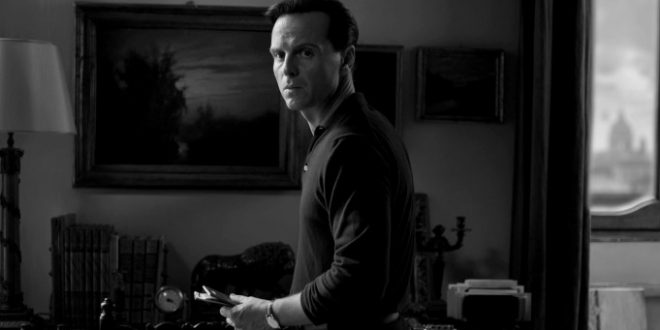Over the weekend I binged watched a trio of Ripley movies (skipping “Ripley’s Game” and “Ripley Under the Ground”) that novelist Patricia Highsmith (1921-1995) wrote and lionized “Tom Ripley” a pernicious psychotic with a pleasant façade and amoral core. Commencing with Netflix’s “Ripley” starring Andrew Scott (“All of Us Strangers”), an eight- episode, compelling study of a man who looks in the mirror and sees vapidity, a substanceless soul, capable solely of mimicry, filling in the blanks of an uninformed, scantily educated grifter; instinctively cunning, shrewd, nauseatingly envious of the privileged. Andrew Scott is pulverizing in the role; his smile slithers across his face, his eyes, holes of vindictiveness, self-aggrandizement and murder; brilliantly, brutally captivating. Of the trio he is the most hardened and fearful. His only sliver of redemption is his interest in the artist Caravaggio (1571-1610), likened his murders to those of the artist.
Costarring Johnny Flynn as “Dickie Greenleaf” and Dakota Fanning as “Marge Sherwood” filmed in black and white director Steven Zaillian concentrates viewers attention in every scene on the remarkability of Andrew Scott.
“Purple Noon” (1960) directed by Rene Clement, starring the most gorgeous of the “Tom’s” Alain Delon, lacking the complexity of the other two; an admirer of artist Fra Angelico (1395-1455) but unsophisticated, jovial, jealous. “Purple Noon” was from a poem by Percy Shelley referencing depression, dejection, no matter the time of day. In conclusion Tom is accountable for his untoward actions. Delon is a pungently charming, charismatic villain.
“The Talented Mr. Ripley” (1999) featuring in director Anthony Minghella’s version Matt Damen “Tom Ripley”, Jude Law, “Dickie Greenleaf”, Gwyneth Paltrow, “Marge Sherwood”. The major difference is immediate: Tom Ripley is reminiscing about his foibles, the “if only’s”, the lies, duplicity. He instantly claims to be “Dickie Greenleaf” before encountering him; he is “talented”, plays the piano, an accomplished impersonator and like the other two a forger. Damen gifts his “Tom” a disturbing inquisitiveness, an underlying hubris poisoning his perspective. And more than the other two his love for “Dickie” is profound, flirting with idolatry, “Dickie” more than a playboy is a credited saxophone player, Law champions the role.
The similarities between the three films are the underlying homosexual tendencies exhibited, some subtle, between the male protagonists. The slayings and disposal of the victims; “Tom” has a fear of water, manifested in a myriad of scenes by the trinity; “Dickie” is stabbed or bludgeoned in a boat.
Primarily “Tom” is a metaphor for the “have nots”; “Dickie” the “haves”. Highsmith, writing in 1955, captures the veneer of wealth and its protective shield, inbred, impossible to imitate; “Dickie”, although kind, plays on the insecurities of “Tom”, belittling him, sneering at his social inadequacies, paltry refinement. This is the source of his undoing.
“Tom Ripley” is an enigmatic, intriguing creature, bereft of a splinter of a conscience; illusively, his rapacious aspirations even if fulfilled, lack satisfaction, contentment, or gratification.
FOUR STARS!!!!
Peneflix
 Peneflix MOVIE REVIEWS BY PENEFLIX
Peneflix MOVIE REVIEWS BY PENEFLIX




